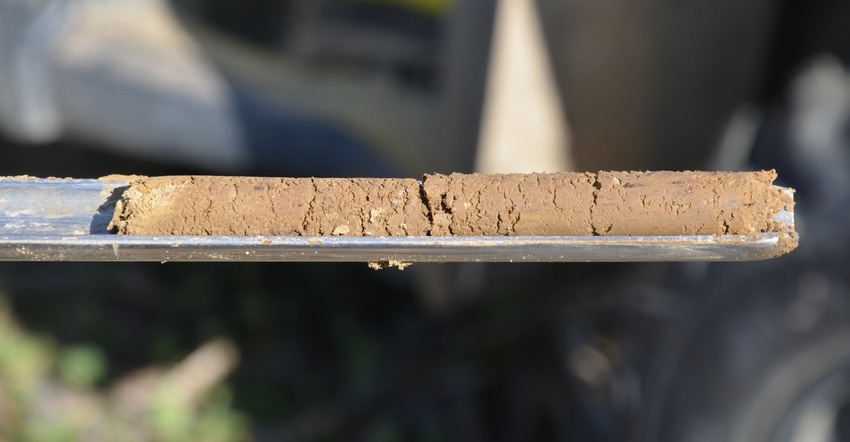
For soil testing, automatic probes and even autonomous vehicles are available. But using high-tech equipment isn’t what’s most important; instead, it’s mapping where to test soils, says John McGuire, chief innovative officer for Brookside Labs and the Amplify Network of Crop Consultants.
Accurate results can be achieved by using a simple soil probe and laying out soil sampling zones correctly. McGuire believes the most important component is testing soils with different cation exchange capacities, or CEC values, separately. He offers a five-step process that can improve crop management:
employing basic agronomy
collecting high-quality data
learning from aggregated data
testing possible changes on farm
implementing those changes
See Data-driven decisions must start with good data.
Improved disease control
Cruiser Maxx APX from Syngenta is now an approved seed treatment for soybeans. Dale Ireland, technical product lead for Syngenta Seedcare, demonstrated to Farm Progress editors how this new treatment improves protection against pythium and phytophthora, two key soybean diseases, compared to existing products. It also protects against fusarium, rhizoctonia, seed-borne diseases and early-season insects.
Cruiser Maxx APX combines Cruiser Maxx Vibrance with picarbutrazox, representing a novel mode of action in seed treatments. Learn more at syngentaUS.com.
New adjuvant worth a look
If something sounds too good to be true, it usually is. A skeptical farmer who tested Hydrovant, an adjuvant for fertilizer and pesticide applications, tells Willie Vogt, executive editor at Farm Progress, that this product might be an exception. It’s helped improve control of Palmer amaranth and kochia, and appears to improve fertilizer utilization.
Corbet Scientific makes Hydrovant, described as an activator-sticker that gently binds chemicals to plants. It creates a 3D matrix around the plant, binding the active ingredient in the pesticide to the leaf. The inventor describes it as a kind of scaffolding that holds products on the plant even as the plant grows. See Tech keeps crop protection products where you want them.
‘Old’ tech combines with new tech
Jonathan Napier of Rothamsted Research in England works with camelina, a plant you’ve likely never heard of. Yet his work could be groundbreaking. He couples a naturally occurring genetic trait, EPA, with a genetically modified trait, using new gene editing technology, and finds that two plus two equals more than four! He’s boosting oil and seed production, and harvesting key omega-3 fatty acids important for human health.
What makes his efforts unique is that he’s using older, genetically modified trait technology and combining it with state-of-the-art CRISPR gene editing. See Gene editing can ramp up plant traits.
AI weather forecasting
What would you do differently if you knew the weather forecast three to six months in advance with a higher degree of confidence? Himanshu Gupta believes he can deliver that accuracy through his startup company, ClimateAi. His goal is forecasting the risk of extreme weather going beyond two weeks using artificial intelligence.
ClimateAi markets to food companies and input suppliers to agriculture. In Australia, a local co-op is using SKIP, a tool that ClimateAi helped develop, and deploying the tool with farmers. See Forecasting weather, climate far into future goal of startup.
About the Author(s)
You May Also Like




